
* Corresponding author.
E-mail addresses: pryhorovska@gmail.com (T. Pryhorovska)
© 2019 Growing Science Ltd. All rights reserved.
doi: 10.5267/j.esm.2019.5.004
Engineering Solid Mechanics 7 (2019) 193-204
Contents lists available at GrowingScience
Engineering Solid Mechanics
homepage: www.GrowingScience.com/esm
Analytical estimation of tooth strength, restored by direct or indirect restorations
O. Bulbuka, A. Velychkovychb, V. Mazurenkoc, L. Ropyakb and T. Pryhorovskab*
aIvano-Frankivsk National Medical University, Ukraine
bIvano-Frankivsk National Technical University of Oil and Gas, Ukraine
cVasyl Stefanyk Precarpathian National University, Ukraine
A R T I C L EI N F O A B S T R A C T
Article history:
Received 20 December, 2018
Accepted 29 May 2019
Available online
29 May 2019
This work presents a stress-strain state analytical estimation of restored tooth hard tissues with
consideration of their contact interactions with a monolithic filling or a dental onlay. The tooth
with a defect is simulated as a continuous isotropic cylindrical body with a non-through hole, and
the filling or onlay is simulated as an elastic deformable cylinder. The contact between the tooth
and the fillings (onlay) is simulated as the ideal contact. The final strength estimation of the
restored tooth is carried out according to the energy criterion. The authors suggest a linear index
of tooth damage for practical application of the obtained results. This index can be easily obtained
by direct measurement. The differential approach is developed to select a restoring method of the
tooth with the defect to provide a reliable restoration of the anatomical crown of the tooth.
© 2019 Growing Science Ltd. All rights reserved.
Keywords:
Contact interaction
Stress-strain state
Layered structure
Restoration
Tooth
Filling
Onlay
1. Introduction
Thin-walled structures are widespread distributed in nature and widely used in engineering because
these structures successfully combine low material consumption and required strength. However, the
thin-walled structure like any perfect product does not have a very high safety margin, and therefore is
quite sensitive to the violation of nominal load modes and to various kinds of imperfections. Stress
concentrators or other defects develop during operation and jeopardize these structures, thus they can
significantly reduce structure’s life (Gross & Seelig, 2018). Frequent fractures of anatomical co-root of
a tooth with a defect under full load are the clear example of this phenomenon (Jin et al., 2016; Listl et
al., 2015). Also, residual stresses and contact loads appearing after restoration can be dangerous when
the thin-walled structure contacts with an elastic body (Shatskyi et al., 2018; Velichkovich et al., 2018).
Today, the qualitative restoration of the destroyed anatomical crown of the tooth remains an urgent
problem of modern biomechanics and dentistry (Listl et al., 2015). A correct selection of restorative
materials and a crown restoring method are the keys to a successful solution to this problem. First, this
approach should provide the durability of all elements of the composition (stored tooth and restoration
material) and their adhesion. Tooth functional properties significantly depend on the chewing stresses of

194
hard tissues of the tooth. Therefore, careful calculation of the stress-strain state indicators and the restored
tooth crown strength assessment are necessary in order to choose an adequate restoration method. The
inadequate study of this issue and the inconvenience for the practical application of already existing
results have become the motivation for this research works.
The technology of tooth restoration includes direct and indirect methods of restoration, in particular
filling, pin constructions, dental onlays and crowns. The crowns are obtained by the centrifugal casting
method (Ropyak et al., 2016). The first attempts to analyze the destruction causes of chewing tooth
restored crowns as a biomechanical problem were initiated in the work of Milikevich et al., (1981) and
subsequently developed in the works of Mamoun & Napoletano, (2015); Srirekha & Bashetty, (2013);
Nishta et al., (2014).
The method, proposed in Milikevich et al., (1981), also determines the tooth occlusive surface
destruction index (TOSDI) and recommends using one of the four main types of filling (seal, dental
onlay, artificial crown, pin construction) for tooth crown clinical restoration. The type of used filling
depends on the diagnostic scale (0 – 0.55 – 0.6 – 0.8 – 1) of the TOSDI possible values. The TOSDI
index is defined as the ratio of the 2nd class (by G. V. Black) carious cavity area and the tooth occlusive
surface area. Practical recommendations for a tooth restoration method usage are based on the developed
a mechanic-mathematical model of the tooth with the defect and relation between the tooth crown stresses
and the TOSDI index. However, this index does not take into account destruction depth of the hard tooth
tissues. Therefore, an improved index was proposed in Mamoun & Napoletano (2015), which consider,
additionally, tooth crown fracture depth index (TCFDI) and gives recommendations for tooth restoration
method depending on a two-dimensional diagnostic scale. The works published by Srirekha & Bashetty,
(2013); Nishta et al., (2014) propose a finite-element model derived from the graph approach or three-
dimensional modeling for the stress-strain state of the “tooth-filling” system.
Contact problems for elastic systems constitute the essential part of the mechanics of deformable
solids. Statements and methods for contact problem solving by continuum models of a continuous
medium are presented in the works of different researchers such as (Goryacheva & Martynyak, 2014;
Kravchuk & Neittaanmaki, 2007; Dolgov et al., 1996). Pryhorovska & Chaplinskyy, (2014);
Pryhorovska, (2017); Larson et al. (2013) studied the problems of contact interaction of the tooth and
solids with loading. These works shows the general patterns of contact interaction and describe the state
of the problem. However, these approaches cannot fully meet the needs of engineering practice because
of their mathematical complexity. The works, which describes the numerical methods for contact
problem solving and experimental approaches (for example, (Velichkovich & Dalyak, 2015;
Velichkovich et al., 2011; Vlasiy et al., 2017)) deserve attention too. Attention is paid to the simulation
of strength, stiffness and stability of shell and planar structures, especially of their complex forms
(Panevnik & Velichkovich, 2017) and for cases of stress concentrators (Kolesov et al., 1992) or
inclusions. In particular, the effects of stress concentrations in nonhomogeneous solids near cavities and
inclusions were studied in (Kolesov et al., 1993; Shats’kyi, 2015), and a model was proposed for
assessing the efficiency of rectifying crack-like defects with non-contrast material in (Striletskyy &
Rovinskyy, 2017). The physical (Saakiyan et al., 1987), electrochemical (Saakiyan et al., 1989; Dolgov,
2016) and analytical (Shatskii, 1989) methods are used to study the behavior of materials, including
layered structures with loading. However, models and methods of the theory of rods, shells and plates
are more suitable for analytic studies of body contact interactions. According to these approaches, the
main difficulties in contact tasks arise at the stage of research object simulations and the adequate choice
of theory. But the contact tasks, in fact, for thin-walled elements have their own specificity associated
with the emergence of irregular contact tensions, additional zones of detachment, etc. The analytical
methods for solving such problems for plates and shells with defect-kits taking into account the effect of
closing cracks under multiparameter loading were first proposed in the papers (Shatskii, 1989; Shats’kyi
& Makoviichuk, 2005).

O. Bulbuk et al. / Engineering Solid Mechanics 7 (2019)
195
In our opinion, the analytical mechanical and mathematical models of the system "tooth-filling",
studied in the previous papers, are somewhat simplified and do not consider a number of important
factors. First of all, we mean neglecting of the numerical calculations of filling compressibility and not
taking into account the effects of Poisson for the tooth tissues, which distorts the parameters of the stress-
strain state and does not allow to estimate the possibility of loading influence of the system "tooth-filling"
by stretching stresses. Such simplifications can significantly affect the proper choice of the tooth crown
restoration method. Therefore, our work presents the results of research aimed at improving the methods
of analytical evaluation of the stress-strain state of the system "tooth-filling" or "tooth-onlay". The
authors developed the model, based on the idea the model is not universal, but directed to solving a
specific problem; however it will make possible to receive analytical results, suitable for convenient use
in dentistry. The model is, first, valuable in terms of obtaining a qualitative picture of the phenomena and
studied processes. The model may be enriched by the methods (Shatskyi et al., 2016; Ropyak et al.,
2017; Shatskii & Perepichka, 2013; Shats’kyi et al., 2016; Velichkovich, 2005) and it will make possible
taking into account the layering of the tooth tissues and consider the research with local, arbitrarily
oriented and dynamic loads, as well as the fatigue damage. The final quantitative data will be refined by
means of point (single) virtual experiments.
The purpose of the study was to improve the analytical evaluation method of tooth crown restoration
for the “tooth – filling” or “tooth–onlay” stress-strain state and to develop recommendations for destroyed
crown recovery.
The purpose is detailed in the following tasks:
to develop a mechanical - mathematical model of the “tooth – filling" contact as a system of
equations, describing the static equilibrium of the system, physical relations of the tooth and
filling solid tissues with external compressive loading, boundary conditions and contact
conditions;
to study the stress-strain state of the system and calculate all its indicators (in particular axial,
contact and circumferential tensions);
to develop and draw relations between the obtained results and the Tooth Linear Damage
Index (TLDI), elastic-mechanical properties of the tooth and feeling materials used for the
tooth crown restoration;
to analyse the relations, in particular to evaluate theory, that takes into account maximum
equivalent Guber-Mises stress magnitude;
to develop practical recommendations on tooth restoration rational method choice.
2. Materials and methods of tooth tissue and monolithic filling or dental onlay strength study
The objective of the study is the “tooth – filling (onlay)” stress-strain state definition with
consideration contact interaction of the tooth hard tissues with the filling (onlay). The problem of contact
interaction of a cylindrical shell (a tooth crown model) and elastic filler (a onlay model) with hard action
of a hard stamp (a chewing load model) was formulated and solved. The developed models of the shell
and the filler made possible to formulate the boundary problem in a form, suitable for analytical solving.
The method of stress-strain state determination and system strength evaluation was developed. Obtained
result reliability is confirmed by validity of the geometric-linear problem formulation, the rigorous
implementation of mathematical methods tested in the literature for analytical studies, the individual
partial (marginal) case result convergence with literature known results.

196
2.1 Materials, used for experimental study
The study was conducted for a piecewise-homogeneous elastic composition with hard stamp loading,
which simulates chewing of the tooth, restored by direct or indirect restorations. The cross-section of the
model is a dual-binding region with elasticity and strength ranging from layer to layer, i.e. piecewise-
constant functions related the radial coordinate. The stress-strain expressions for all material layers were
developed based on the same static and kinematic hypotheses of the elasticity linear theory.
The following statements were assumed:
- material properties of the homogeneous regions are determined by the Young modules, Poisson's
coefficients, and the boundaries of yield or strength (Chung & Park 2016).
- properties of tooth hard tissues are considered constant, and the properties of the restoration material
are considered discrete-variable. The following materials were used to simulate tooth restoration:
a common light hardening filling material (a Gradia Direct type composite) with options:
modulus of elasticity E=1.2 GPa, Poisson coefficient µ=0.43.
a ceramic material for inserts (type Vitablocs) with the following options: modulus of
elasticity E=6.0 GPa; Poisson coefficient µ=0.4.
The averaged elastic constants for the hard tissues of the tooth were: E0=95.0 GPa, µ0=0.32.
2.2 Mechanical-mathematical model of the system “tooth-filling” or “tooth-onlay”
Due to complexity of the masticatory tooth occlusive surface and its layered structure, the authors
assumed some statements. The restored tooth is simulated as a cylindrical body 1 with a non-through
hole (Fig. 1), smoothly stubbed in a rigid obstacle. The model options are:
vertical wall thickness h;
outer diameter D;
hole depth is the same order value with the outer diameter D;
The hole cavity is densely filled with an elastic deformable cylinder 2 (radii R and height a).
Tooth tissues are considered as a continuous isotropic medium with averaged elasticity constants. A flat
smooth area represents the chewing surface. Chewing effort Q is applied to the tooth surface by the hard
stamp with average pressure 0
/( )pQFF, where F– filling (or onlay) cross-sectional area, F0 –
cross-sectional area of the tooth with a defect. The edge effect in the cylindrical body bottom is neglected
at the initial research stage. The stress-strain state of the system is described in the cylindrical coordinates.
Fig. 1. Schematic diagram of the restored tooth: 1 – hard tooth tissues; 2 – filling (onlay)

O. Bulbuk et al. / Engineering Solid Mechanics 7 (2019)
197
The elastic equilibrium of the cylindrical body (the model of the tooth with the defect) is described
by the momentless shell theory. The tooth static equilibrium is described the relations:
00
z
d
hdz
,
(1)
0
hR
, (2)
The reaction of the loaded tooth hard tissue is described by the physical relationships (generalized
Hooke's law):
0000
0
1
zz
E
,
(3)
0000
0
1
z
E
(4)
and the Cauchy relations: 0
0z
du
dz
, 0
0
w
R
, where 0z
, 0
– axial and circular tooth strains,
0z
, 0
– axial and circular tooth deformations, ,
– normal and tangential contact stresses, 0
u,
0
w – axial and radial displacements, 00
,E
– average Young's modulus and Poisson's coefficient of
tooth hard tissues.
As the initial model relations for the internal cylinder (filling or onlay), we use the following equations
of equilibrium (Popadyuk, 2016):
20
z
d
dz R
,
(5)
==
r
, (6)
Hooke's law
1
zzr
E
,
(7)
1
rz
E
,
(8)
and the Cauchy relations: z
du
dz
, w
R
, where r
,
, z
– radial, circumferential and axial
stresses in the filling (or onlay); z
,
– radial, circumferential and axial deformations of the filling;
u, w – radial and axial displacement of the filling, ,E
– the elastic modulus and Poisson's ratio of
the material of the filling (onlay). The ideal contact relations describe the tooth and filling (onlay) contact
conditions: 00
,.uuww
The axial and radial displacement equality conditions 0
uu
and
0
ww are replaced by the compatibility conditions of the tooth and filling (onlay) deformations. The
boundary conditions of the tooth free face end are:
00
(0) (0) 0
zz
FFQ
. (9)







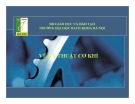

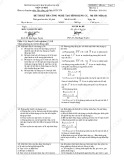
![Đề thi Công nghệ tạo hình dụng cụ năm 2020-2021 - Đại học Bách Khoa Hà Nội (Đề 4) [Kèm đáp án]](https://cdn.tailieu.vn/images/document/thumbnail/2023/20230130/phuong62310/135x160/3451675040869.jpg)
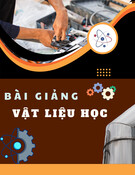

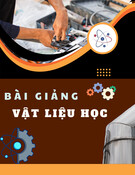



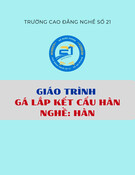


![Bài tập môn Cơ sở thiết kế máy [năm] [mới nhất]](https://cdn.tailieu.vn/images/document/thumbnail/2025/20251008/ltgaming1192005@gmail.com/135x160/26601759980842.jpg)

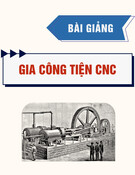
![Tài liệu huấn luyện An toàn lao động ngành Hàn điện, Hàn hơi [chuẩn nhất]](https://cdn.tailieu.vn/images/document/thumbnail/2025/20250925/kimphuong1001/135x160/93631758785751.jpg)


